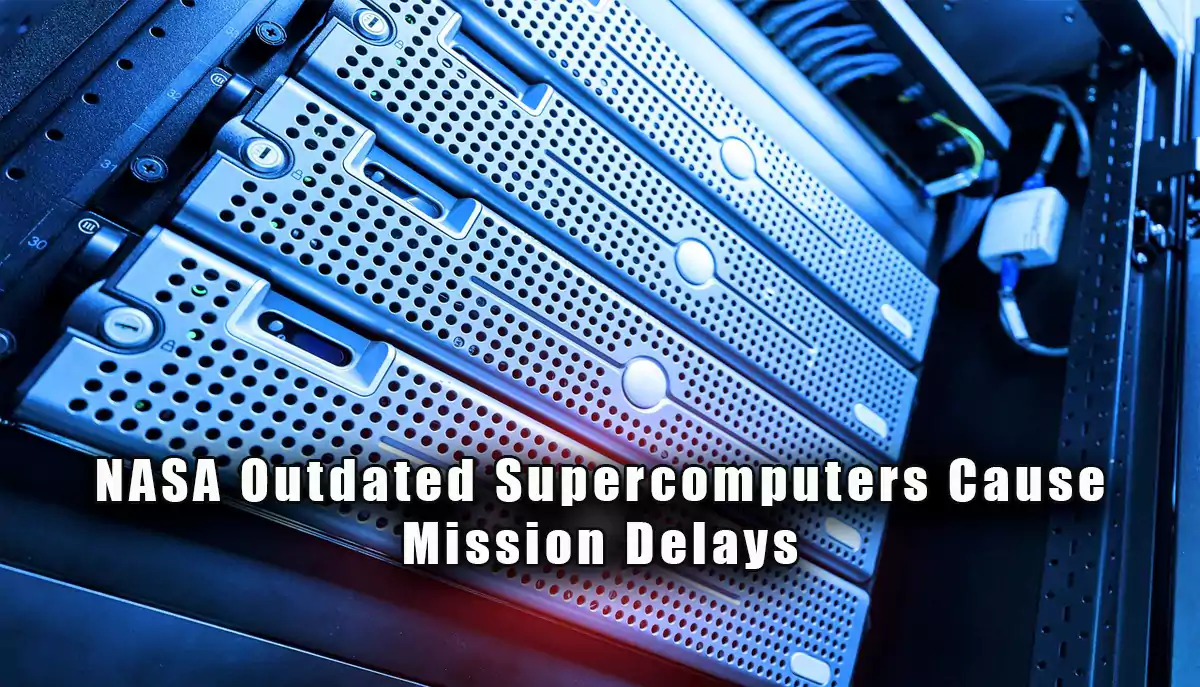According to a special study released by The Register not long ago, NASA supercomputing abilities are not up to par, which is causing major mission delays. The NASA Office of Inspector General’s study shows that the agency’s infrastructure is very old. For example, one of their most powerful supercomputers has 18,000 CPUs but only 48 GPUs.
Outdated Infrastructure Hinders NASA Progress
NASA is famous for its ground-breaking finds and technological advances, but it is currently facing a major problem in the area of supercomputing. NASA supercomputers still use old CPU-centric architectures, even though they are at the cutting edge of technology. This makes it harder for NASA to keep up with the needs of modern scientific research.
The company runs five main high-end computing (HEC) facilities, which are spread out between the NASA Advanced Supercomputing center in Ames, California, and the NASA Center for Climate Simulation in Goddard, Maryland. These include Aitken, Electra, Discover, Pleiades, and Endeavour. Each one is responsible for supporting a different set of important tasks, from modeling the climate to space exploration projects like the Artemis program.
Challenges and Concerns Highlighted
Several major concerns made by HEC officials about NASA old infrastructure are brought to light in the inspector general’s report:
• Supply Chain Problems: Part of the reason NASA can’t update its supercomputing systems is that getting the parts they need is hard because of problems in the supply chain.
• Coding Requirements: In order to use new technologies successfully, qualified people are needed to deal with modern programming languages and coding requirements.
• The business and the plan: The fact that HEC operations are not organized leads to inefficiency and a strategy that is not well coordinated, which makes it harder for the agency to use both on-premises and cloud computing resources efficiently.
Implications for NASA Mission Success
Many things are affected by NASA old supercomputing infrastructure, and it seriously hinders the agency’s capacity to reach its exploration, science, and research goals. Mission delays, overworked resources, and security holes make it clear that upgrading efforts are needed right away.
Path Forward: Transitioning to GPUs and Modern Code
The study stresses how important it is to switch to Graphics Processing Units (GPUs) and update code so that NASA can meet its current and future computing needs. GPUs have the most powerful computers for parallel processing, which is important for scientific models and modeling.
It’s never been more important for NASA to improve its supercomputing power as it continues to further human understanding and exploration. The agency’s goal to find out more about the universe and lead the way for humans on their journey to the stars will only continue to be successful if it deals with the problems listed in the inspector general’s report and adopts new technologies.
You May Also Like :
- How Mixed Reality Transcends Augmented Reality
- Exploring Astra Lumina: An Immersive Light and Sound Experience in Seattle
- NASA Outdated Supercomputers Cause Mission Delays, Inspector General Report Reveals
- MIT Researchers Achieve Breakthrough in Room-Temperature Magnet Control
- Quantum Computing and Networking are set to revolutionize cryptography.
- Exploring OpenAI Potential Leap into Quantum Computing
- Empowering Mobility: Unveiling the Magic of Quantum Electric Chairs
- Understanding The Particle and Wave Duality In Quantum Theory
- Maximizing Online Visibility: The Power of Effective SEO Strategies
- The Evolution and Significance of Web Development
- 10 Benefits of Artificial Intelligence In Healthcare: Transforming Patient Care (2024)
- What Is Meant By Applied Quantum Computing?
- What’s The Score?
- Windows 11 Upgrade (23H2) On Unsupported Hardware: A Comprehensive Guide
- Kaleb on shriners commercial: Biography, Net Worth, Age, Wife, and Career
Join our WhatsApp Group for latest update notification
